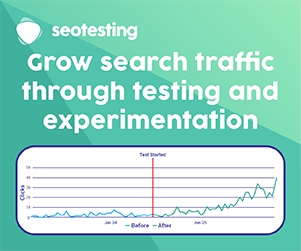It’s all too easy in today’s fast-paced digital marketing environment to lose site of the distinction between marketing and advertising, to get wrapped up in the latest developments at Google, to focus on metrics and measures instead of the core goals they’re meant to quantify. Our special guest for episode 339 of the award-winning EDGE of the Web podcast was Jay Acunzo, Founder of Marketing Showrunners. Host Erin Sparks spoke with Jay about how to keep your eye on the real prize in marketing. Here’s what we learned:
00:40:37
The Need for Aspirational Anchors

Aspirational anchors are like goals but different. When you think about goals, you think about mile markers or kilometer markers down the road. They represent what you need to do or where you need to get to. Unfortunately, the goals articulated tend to incentivize you to do the safe thing because you’re scared of not reaching them. So the goals sound like increase listeners 50% month over month for your podcast. A far better aspirational anchor would sound like, “Let’s show the world how fun and relevant we can be through our show.” How will you measure that? Well, one way might be measuring the size of the audience, but maybe also the passionate qualitative responses.
When you have an aspirational anchor like that, what you’re focused on isn’t some point in the distance. You’re focused on what behavior changes do you need to make now such that you do better work and see better results? And in comes some of the resourceful creativity mentioned earlier. Aspirational anchors are about behavioral changes to improve the quality and effectiveness of the show.
00:43:20
Honing Your Content and Your Show
How do you know if your continuous improvement efforts on a show go too far? Another way of putting this is at what point do you recognize when your changes are showing diminishing returns? Jay’s take on this is about being empathetic, and to do that you really have to make sure you consume your own content! And you do this not to just pat yourself on the back for a job well done, but to use in the same way athletes what “game tape” to analyze their performance and spot areas for improvement.
For example, when doing interviews you have to really look at what you’re doing. When the guest finished speaking, what do you as the interviewer do? There are three basic responses: 1) You can disagree with the guest because it’s an opportunity to clarify a point, and disagreement makes for good tape as long as you’re not a jerk about it. 2) You can take a moment to build upon what the guest said, or 3) You can just ask the next question. The first two responses result in interviews that are more like conversations. But if you look at people who are really good at interviewing, the most often go for response #3 and generally minimize the conversational responses. The only way to make realizations like this is by consuming your own content.
Holding the mirror up to your own content can be a little painful sometimes, but it’s worth it. For example, what’s your URR – unsolicited response rate. If your content is really good, there ought to be people out there who are independently praising it and lifting it up. Is your content spurring people to promote it? If not, then you might not be doing as good a job as you think you’re doing, and there’s learning and improving to be done.
Focus on the reason for a marketer to do a show in the first place. The purpose is to develop deeper relationships with people. And if your show isn’t doing that, then it’s not as good as you think it is. It’s about depth, resonance, quality time spent, and so on, and you need to measuring those aspects of a show to get at its true effectiveness. If your audience can’t overcome the friction to make an unsolicited response to your content, then you’re missing the mark.
It also means gaining a deeper understanding of creativity and innovation. Some people think it’s just being different, but it’s more than that. You could be different by having five minutes of silence in the middle of your podcast, but people aren’t going to want that kind of difference. You want to be different and good or different and welcome. When you get different combined with the right elements, this is what Jay calls refreshing, and that’s what you should be aiming for. If you’re consistently refreshing then you’ll exceed people’s expectations and find success. It means constantly making small changes to the status quo to find what will work for you, and then change it up again before it goes stale. Constant small, incremental changes in the day-to-day minutiae is the way to get there. Jay calls these “wrinkles” and constantly creating these wrinkles is essential to creativity.
Whether or not your show is great is not a judgement you can make as the show’s creator. That’s up to the audience to decide. What show creators can focus on is getting better through those constant wrinkles to the status quo. Fear of failure sometimes keeps people from engaging in the constant improvement process, which just guarantees failure. And when you focus on these small changes and wrinkles, they’re less daunting and shouldn’t generate that fear of failure.
Connect with Jay Acunzo and Marketing Showrunners (MSR)
Twitter: @jayacunzo (https://twitter.com/jayacunzo)
LinkedIn: https://www.linkedin.com/in/jayacunzo
Instagram: @jacunzo (https://www.instagram.com/jacunzo)
MSR web: https://www.marketingshowrunners.com
MSR Twitter: @MShowrunners (https://twitter.com/mshowrunners)
MSR’s 3 Clips podcast: http://bit.ly/2NKwaPU
What’s Your Baseline Digital Marketing ROI?
If you want a baseline understanding of your digital marketing ROI, then find out with a Site Strategics report examining your SEO, content, social media, and PPC. Visit https://edgeofthewebradio.com/roi to get 30% off a comprehensive review of your digital assets!























